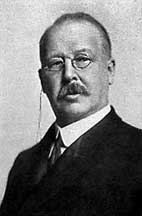.Buffalo Area Stained Artists and Fabricators ....................... Stained Glass - Table of Contents
Stained Glass in Western
New York: The Frohe Family
.Buffalo Area Stained Artists and Fabricators ....................... Stained Glass - Table of Contents
Stained Glass in Western New York: The Frohe Family

1889 Photo
|
Leo P. Frohe was born on August 26, 1851 in Sittard, Holland. In 1862 he came with his mother and his sisters to Buffalo, joining his father who had come a year earlier in order to find them a home in their new homeland. The young artist received his education in the old fatherland and here in Buffalo. For many years he was the manager of the Buffalo Stained Glass Works. Frohe's work for the company won a silver medal at the Paris Exhibition in 1889. In 1895 he established his own artist's workshop ( Frohe Art Glass) at 218-220 Broadway. In 1876 Mr. Frohe married Miss Magdalena Weyland of Buffalo. They had 11 children. The family residence was at 703 Ellicott Street. Mr. Frohe was a member of St. Mary's and St. Michael's Church. Hewass a Lieutenant Colonel in the Buffalo Regiment of the Knights of St. John. |
|
Partial reprint
Leo P. Frohe at Buffalo Stained Glass Works By Gregory L. Witul "Aesthetic Industry: The Buffalo Stained Glass Works," in Winter 2010 Western New York Heritage, pp. 46-53 The year 1888 was pivotal for the Buffalo Stained Glass Works ... This was the year when William Booth retired and [Ferdinand Jean Baptiste] Riester became the sole owner. Then Franz Mayer of Munich, opened a New York office for the German stained glass firm. This new competition hurt the company's earnings but also spurred it to its greatest accomplishment. Paris, France, housed the World's Fair of 1889. Artists, architects and engineers the world over sent specimens and designs in hopes of winning a top medal in their field. The Buffalo Stained Glass Works sent a three-window set intended for the home of Mr. Riester, designed by manager Leo P. Frohe. [Leo P.] Frohe, born in the Netherlands,was the son of classically trained artist Gottfried Frohe. Taught by his father, Leo excelled at painting and drawing; under his father's guidance he also began working in stained glass. In 1880 he was hired as the designing artist and superintendent of the art department. For the Riester home, Frohe designed a a secular St. Cecila (iconography) flanked by two jewel-and-floral-themed windows. Frohe's windows won the Paris Fair's silver medal. This represented tremendous recognition of the Glass Works and the American stained glass industry as a whole. A reporter at that time said, "It is one of the first times... that American glass, by American workmen, from American designs, that are distinctly American" competed with the "European masters in Europe" and won. Because of this triumph, Frohe was elevated to junior partner. Two of the last major undertakings of Riester & Frohe in the city of Buffalo were finished in 1891. The first project was for St. Louis Church on Edward Street. This, the oldest Catholic Church in the city, ordered 12 nave windows, 18 clearstory windows and two rose windows. They were prepared by one of the Works most talented designers, Otto F. Andrle ... The second major set of the year was for St. Columba. at Eagle and Hickory streets. The Works installed 20 decorative windows.... In 1895, Leo P. Frohe founded the Frohe Art Glass. This firm carried the history and style of the [Buffalo Stained Glass] Works well into the 20th century. Under Leo's ownership, the firm created windows for SS. Peter & Paul in Hamburg, St. Joseph's Cemetery Chapel in Albion, and St. Mary's on Broadway in Buffalo. After a fire in 1986, the St. Mary's windows were given to the Buffalo & Erie County Historical Society, where they are still on display. Upon Leo's death in 1919, his son Ferdinand A. Frohe took over the family business. Paul Frohe, Leo's great-grandson, was the last family member to run the studio. [In 1901] Fernando Riester passed away.... By 1905, it was all over. After 60 years of innovations, awards and accolades, the Buffalo Stained Glass Works quietly closed its doors and turned off the lights. |
Watercolor, by Leo P. Frohe
Saints Peter and Paul RC Church, Hamburg, NY:
Crucifixion - Leo P. Frohe
24 saints windows- Ferdinand Frohe
4 windows in the 2 towers- Leo P. Frohe
3 windows at front entrance- Leo P. Frohe
Rose window- Leo P. Frohe
Misc. photos
St. Louis RC Church By Buffalo Stained Glass Works, located at 29 Pearl Street. The owners were Ferdinand J. Riester and Godfrey Frohe. The glass designers were Leo Frohe and Otto Andrle
Buffalo:
|
